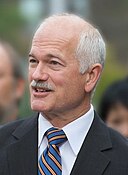Canadian federal election 2004
|
|
|||||||||||||||||||||||||||||||||||||||||||||||||||||||||||||||||||||||||||||
|
|||||||||||||||||||||||||||||||||||||||||||||||||||||||||||||||||||||||||||||
|
|
|||||||||||||||||||||||||||||||||||||||||||||||||||||||||||||||||||||||||||||
|
308 seats in the 38th Canadian Parliament 155 seats needed for a majority |
|||||||||||||||||||||||||||||||||||||||||||||||||||||||||||||||||||||||||||||
|---|---|---|---|---|---|---|---|---|---|---|---|---|---|---|---|---|---|---|---|---|---|---|---|---|---|---|---|---|---|---|---|---|---|---|---|---|---|---|---|---|---|---|---|---|---|---|---|---|---|---|---|---|---|---|---|---|---|---|---|---|---|---|---|---|---|---|---|---|---|---|---|---|---|---|---|---|---|
| Opinion polls | |||||||||||||||||||||||||||||||||||||||||||||||||||||||||||||||||||||||||||||
| Turnout | 60.9% ( |
||||||||||||||||||||||||||||||||||||||||||||||||||||||||||||||||||||||||||||
|
|||||||||||||||||||||||||||||||||||||||||||||||||||||||||||||||||||||||||||||

Popular vote by province, with graphs indicating the number of seats won. As this is an FPTP election, seat totals are not determined by popular vote by province but instead via results by each riding.
|
|||||||||||||||||||||||||||||||||||||||||||||||||||||||||||||||||||||||||||||
|
|||||||||||||||||||||||||||||||||||||||||||||||||||||||||||||||||||||||||||||
The Canadian federal election, 2004 (more formally, the 38th General Election), was held on June 28, 2004, to elect members of the House of Commons of Canada of the 38th Parliament of Canada. The Liberal government of Prime Minister Paul Martin lost its majority, but was able to form a minority government after the elections. The main opposition party, the newly amalgamated Conservative Party of Canada, improved its position but with a showing below its expectations.
On May 23, 2004, Governor General Adrienne Clarkson, on the advice of Martin, ordered the dissolution of the House of Commons. Following a 36-day campaign, voters elected 308 Members of the House of Commons.
All three major national parties had changed their leaders since the 2000 election. Earlier the election was widely expected to be a relatively easy romp for Martin to a fourth consecutive Liberal majority government, but early in 2004 Liberal popularity fell sharply due to the sponsorship scandal. Polls started to indicate the possibility of a minority government for the Liberals, or even a minority Conservative government, fuelling speculation of coalitions with the other parties. In the end, the Liberals fared better than the final opinion polls had led them to fear, but well short of a majority.
On election day, polling times were arranged to allow results from most provinces to be announced more or less simultaneously, with the exception of Atlantic Canada, whose results were known before the close of polling in other provinces due to the British Columbia Supreme Court's decision in R. v. Bryan.
...
Wikipedia




